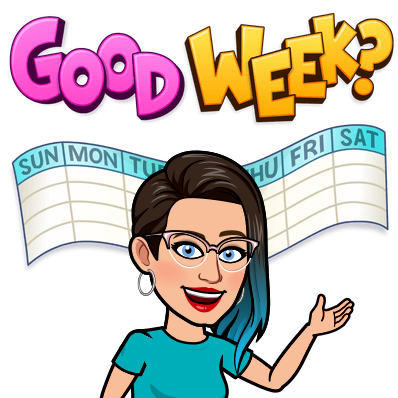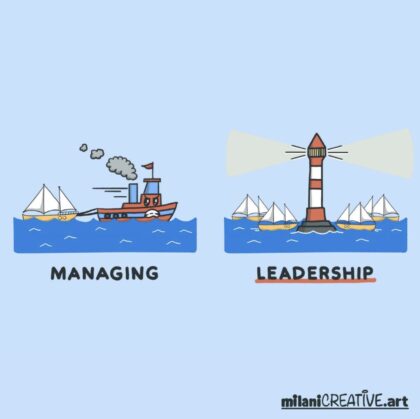Last week, two days after an HR screening, I received a canned rejection note from the person I had spoken with. Very impersonal and dehumanizing.
She asked me to tell her about my management experience, which I did. Small teams, one to five people, complex projects, in demanding environments, where we all collaborated hands-on. I said that “I am more of a collaborative leader than a manager”, and my instinct told me that was the wrong answer.
Sadly it couldn’t guess what the right one was, because “Tell me about your management experience” is a very vague question. Me being autistic, I need much more precise questions. Like “What are some ways you ensure a project is delivered to plan and on time by your team?” Or “Tell me more about how you have helped someone in your team progress?”. Or even “Tell me about a time when you had to protect your team?”.
But while she focused on “management”, I’ve always found true leadership to be more about collaboration, shared vision, and guidance, rather than managing and directing.
This made me reflect on my approach to leadership and how it might not fit traditional management expectations.
So I want to take a moment and share a little on some of my core leadership beliefs, in part to clarify them for myself, and in part to see if they resonate with anyone else, in which case we should definitely have a coffee sometime!!
Whether I am Head of UX or a Project Lead, I do the same things. I plan the work for the quarter, month, and week. I set goals. I try to understand and share _why_ we are doing what we are doing. I help move the work along. I help my team grow and stay sane. And I keep everything as clear and unambiguous as possible, probably erring on the over-explained side (another autistic trait).
Collaborate. Oh, and leaders eat last

Transparent planning
Firstly, I will plan transparently and visually with my team, and invite comments and contributions from each of them. Everything is written down for all to see.
Task selection
Once we have a “tasks for the week” that we have discussed so we all know roughly what needs to be done and what the approach needs to be, I then invite my team to grab the tasks that appeal to them. I dislike being told what to do and how to do it (psychological reactance is strong in me), so I choose to not trigger that in anyone in my team.
Leading by example
I go last, because I am the leader, and also because I have the broadest and deepest skillset, so I can easily do any of the tasks. This also demonstrates that I am willing to take on whatever is needed to support my team.
Coach & Mentor

Ask questions
I do not tell my team what to do and how to do it. I do not do the work for them. I aim to augment the work, and understand their thinking, which then teaches them to be able to defend why they made one choice over another, and so, over time, make well thought-out choices… on their own.
By asking the right questions, we always find a way forward with the work. In that way, I am not an instructor, I am more of a coach and mentor, nudging them in the right direction, prodding them to think for themselves, and watching them grow. It’s not always easy and I feel like I am being forced to sit on my hands (tough punishment for a hand-talking mediterranean), but it’s the only way they can grow: by thinking and doing it themselves.
Demonstrate creative problem-solving
If they are stuck, I will of course suggest ways around an obstacle, perhaps by sharing something I have done in the past that worked.
But my typical approach is “ok, let’s each write seven things we could do”. Those fourteen have invariably given us a 13th or 20th that was the right approach to take. Always create without judgement, and only bring in the evaluation criteria when the creativity is done.
Showing my team what they can do to find a way out rather than telling them what the way out is ensures that soon I will have a team that thinks for itself and is self-managing, freeing up more of my time to do the hands-on work I love.
Plan for sustainable work


Recognise the challenge
One of the things that could not be helped at BCG was overtime. Management consultants are sadly notorious at lacking sleep and working weekends… and burning out. In my teams, I made sure we had a sustainable approach to this endemic issue.
I had noticed that two weeks a month has a surprise that just won’t fit in the working time left by the other meetings, no matter what we do, even adjusting scope. I have high working standards, as does BCG, and those will not be broken. So I had to find a sustainable way around this. One we could handle doing for six months, rather than « just one more week » until we all pass out in week four or six.
Balance Sacrifice and Protection
We planned for one sacrificial night every week. Sometimes we needed a buddy, sometimes it was individual work, but our work weeks had that one evening ready to be sacrificed. The other nights were safeguarded, we could plan dinner with friends or theatre or whatever. This helped eliminate burnout, at least on my projects, foster a very positive and creative mindset given we were rested, and bonded us in the face of a common challenge: defending our time.
It is worth the planning and negotiating overhead
Also, I aimed to have us all disconnected from our screens by 2pm on a Friday (though not necessarily off the phone before 4pm), which allowed for a much more restorative weekend with a long Friday evening unwinding and positive Monday start.
Yes, this added a bit of planning each week, but it made for the only sustainable work experience many of my colleagues had during their tenure!!
And if anything slipped, it was my job to either re-negotiate the plan or sacrifice my own time, because I am the leader, and it is my job to protect the team. Turns out I am a pretty good negotiator, too 😉.
Aim, let go, and course-correct


Set clear goals
I do not tell my team what to do and how to do it.
We set a goal, discuss good outcomes and criteria for success, discuss what we think the steps are, so everyone can add something, reducing our chances of forgetting something, and write it up for everyone to see and refer to. This a variation of the « think out loud » principle from Turn the ship around by Captain L. David Marquet. (Truly excellent book on leadership)
I also make sure we’ve discussed why we are doing the thing, just in case a challenge comes up with the task that conflicts with the « why » and we’ll know to check in with each other.
Take ownership through self-expression
I get them to play back what they think they will then do (this is to get them to word it themselves so they can own it – have you noticed you remember best the books for which you’ve written a review?), we find the next checkpoint, which might be a review of the draft research assumptions and topics to explore, and book a 45-min co-working slot. And then I let them go.
Strategic check-ins and co-working
At the co-working slot, we have a look at the work, discuss, review, adjust, collaborate, and progress it together, before I leave them to get on with the next bits that need doing and another checkpoint in the diary. For the record, I get my work reviewed by my team in checkpoints too, this is a “rules apply to everyone” team.
I’ve had one colleague who was very enthusiastic, loved prototyping in particular, and could easily build elements we did not need. The checkpoints with him needed to be closer together, so course corrections could be done sooner.
Part of being a good leader and able to deliver on time is knowing what your team needs… whether they know it themselves or not.


What else?
In my opinion, a leader’s main role is to support and protect the team, so they can focus on doing their best work alongside you. These are some of the strategies I use that help do that.
- Foster an environment where we all feel safe to speak up. For me, this often means sharing meals and personal stories to connect as people first.
- Listen when they speak up. Sometimes this means having a one-hour counselling session (and I am not a psychotherapist) with someone who is anxious about a dozen things, only a couple of which are related to work. A team is people; support the people.
- Protect their time and sanity. Often this means I go into the “big meetings”, present, listen, question, and negotiate, to bring back well-defined goals back to the team, while they maintain momentum.
- Defend their decisions as if they were your own. This means you never throw a team-mate under the bus, you have the responsibility, you take the hits.
- Provide opportunities for them to shine. Sometimes this means building a slide deck with them, practicing with them and coaching them, and letting them present on the day. My party trick here is to tell them “if you feel nervous and need me to step in, just say “and Sophia will talk more about this”, so that you maintain control and it doesn’t feel like I am stepping in to save you”. It works really well.
- Run written retros, and add a “kudos” column to the “worked well / needs improving / new ideas” classics. Writing allows for everyone to express themselves equitably, and the “kudos” column helps the team look for the positives in their colleagues and feel appreciated in turn.
While my approach might not fit traditional management expectations, I’ve found it leads to more engaged, productive, and satisfied teams, who miss working with me… and I with them.
I love this recent illustration by Milani Creative on Leadership vs Management.

I don’t want to be a tugboat, dragging dead weight behind me. I am happiest being a lighthouse, showing the way.
What’s your take on what makes a good leader and leadership vs. management?
I’d love to hear your thoughts in the comments!
